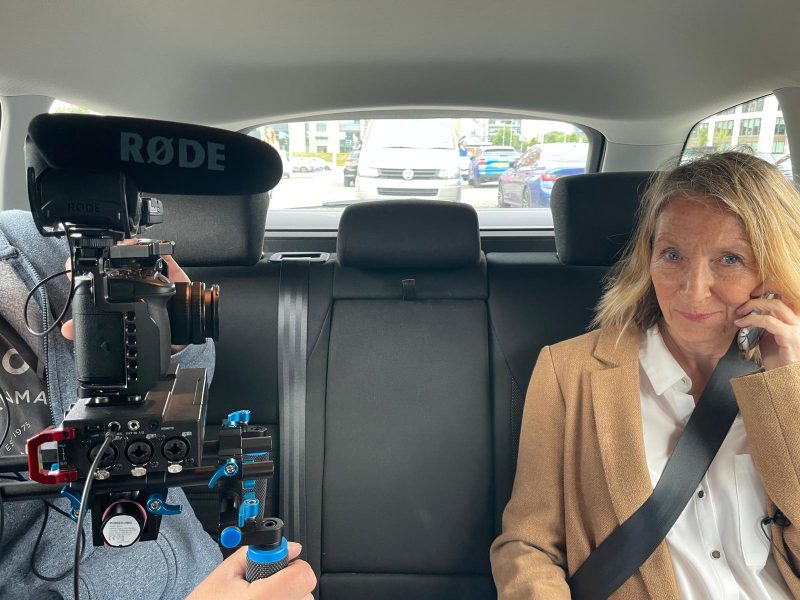
Five types of training videos to engage and educate your audience
By Ben Hancock in Employee engagement, Filming, Training
We’re delighted to have Ben Hancock, Commercial Director of Pulse Studio, back for another guest post. At Understood, we know how Pulse Studio’s expertise in video production can turn corporate training into an engaging experience.
In this post, Ben explores different styles of training videos and how to choose the right one to improve learning and engagement in your organisation.
——
Training video production has become essential in corporate learning and development, offering various approaches to educate and engage employees effectively. Whether you’re onboarding new hires, improving the skills of your team, or training customers on your products, the style of the training video you choose to create plays a crucial role in how well the content is received.
At our UK video production company, Pulse Studio, we’ve had the opportunity to work on many different styles of training content over the years, so in this latest blog I thought it would be helpful to list five distinct styles of training content, each with what we feel are its unique benefits and best use cases.
1. Expert/instructor-led videos
Expert or Instructor-led training videos are the digital equivalent of a traditional classroom setting. An expert, or instructor, delivers content directly to the camera, often accompanied by slides, diagrams, screen capture, stock footage or animation. These videos can be live-streamed or pre-recorded for on-demand access.
Ideal for:
- Topics that require in-depth explanation or complex concepts.
- Training that benefits from a personal connection, such as soft skills or leadership courses.
- Sessions where learners may have questions, as live versions can include Q&A segments.
Benefits:
- Personal connection: Learners often feel more engaged when they can see and hear an instructor.
- Flexibility: Recorded sessions can be replayed, making them suitable for self-paced learning or those with busy schedules.
2. Screen-recording training videos
Software training videos that combine screen recording, animation, and voiceover offer a great approach to teaching users how to navigate and use software applications. Screen recording provides a real-time demonstration of tasks, while animation simplifies complex concepts, and voiceover guides the learner through the process with clear instructions. To push the production values up with this style of content we often rebuild software interface’s in a 3D world allowing us to add more interesting camera moves to the animation & direct viewers attention.
Ideal for:
- Training new users on software features and functions.
- Demonstrating complex workflows or integrations between different software systems.
- Teaching customers how to use your product effectively, reducing the need for support.
Benefits:
- Inclusive learning: The combination of visual (screen recording and animation) and auditory (voiceover) elements caters to different learning styles.
- Clarity: Screen recording shows the actual steps in the software, while animation can explain abstract concepts, and voiceover provides context and instructions.
- Engagement: The use of multiple elements keeps viewers engaged and enhances retention of the material.
3. Scenario-based videos
Scenario-based videos immerse learners in a simulated environment where they must make decisions or solve problems based on real-life situations. These videos often follow a narrative structure, engaging viewers through storytelling that mirrors actual work scenarios, and can be combined with classroom based sessions where learners have the opportunity to discuss optimum solutions to situations.
Ideal for:
- Compliance training, where understanding the consequences of actions is crucial.
- Customer service training, where employees practice handling different interactions.
- Safety training, where learners must respond to emergency situations.
Benefits:
- High engagement: The narrative structure keeps learners interested and invested, and the content is highly related to the viewers.
- Practical application: Learners see how the training applies to their daily work immediately, encouraging self-reflection.
4. Stock/ archive footage & voiceover-led videos
Stock footage and voiceover-led videos combine pre-recorded visuals with a carefully written script narrated by a voiceover. This style is particularly effective when content needs to be exact, clear and informations, whilst not having as much requirement for the analysis of specific situations.
Ideal for:
- Training content that requires visual examples but not necessarily custom footage.
- Topics that benefit from a professional tone, such as policy explanations or product overviews.
- Courses where the visual element supports the narration, making complex ideas more understandable.
Benefits:
- Cost-effective: Using stock or archive footage reduces production costs and time.
- Professional & polished: High-quality stock footage combined with a well-produced voiceover can deliver a high-end final product.
5. Case study videos featuring real employees
Case study videos use real-life examples and feature actual employees who have successfully implemented the training’s concepts or strategies. This style is particularly powerful as it adds authenticity and relatability to the training content.
Ideal for:
- Demonstrating the effectiveness of a particular training program or initiative.
- Sharing success stories that can inspire and motivate other employees.
- Highlighting best practices within the organisation, using real-world examples.
Benefits:
- Authenticity: Real employees sharing their experiences add credibility and relatability.
- Inspiration: Seeing peers succeed can motivate others to follow suit.
- Practical insight: Learners gain a real-world perspective on how to apply the training in their roles.
Choosing the right style of training video can make all the difference in how effectively your content is received. By understanding the unique benefits and ideal use cases of each approach, you can create training materials that not only educate but also engage and inspire your audience.
Talk to us, explore our website, read our blog, and follow us on LinkedIn to learn more and discover ways to grow a more successful business.


